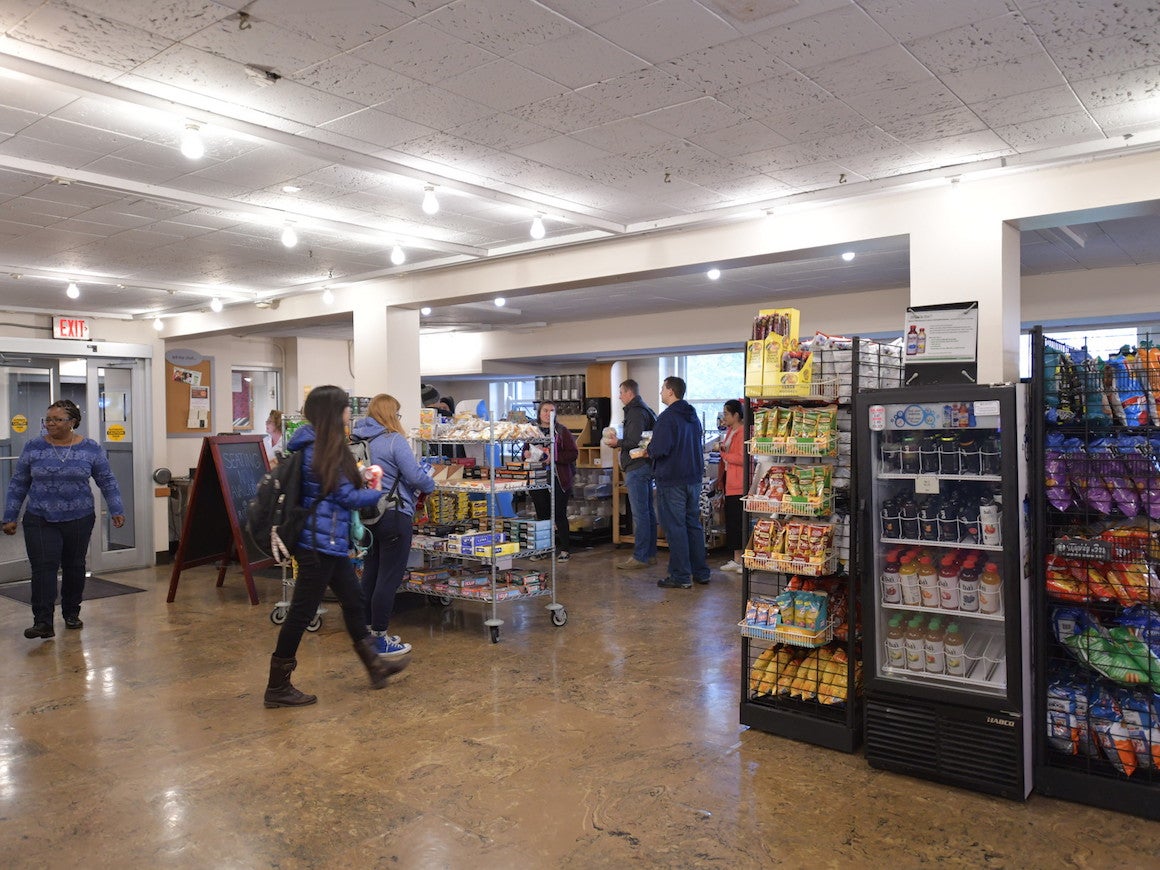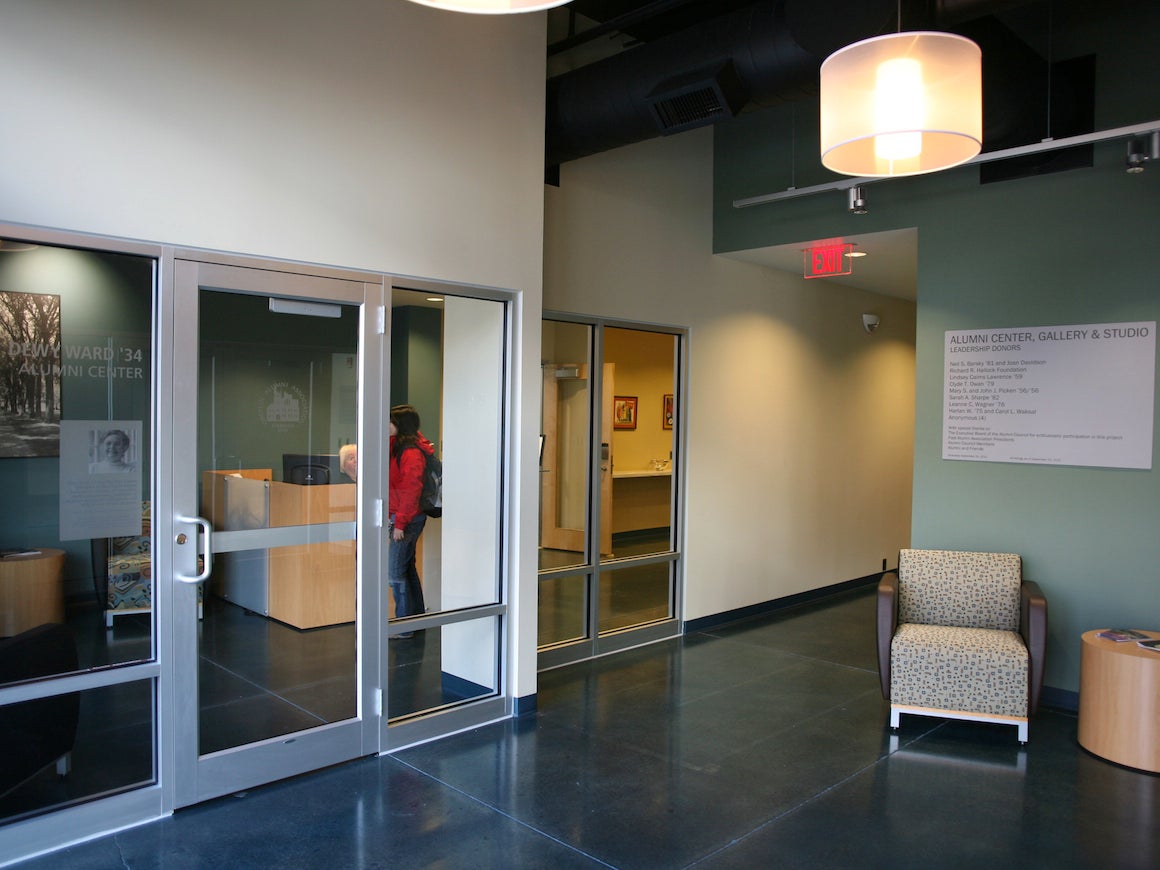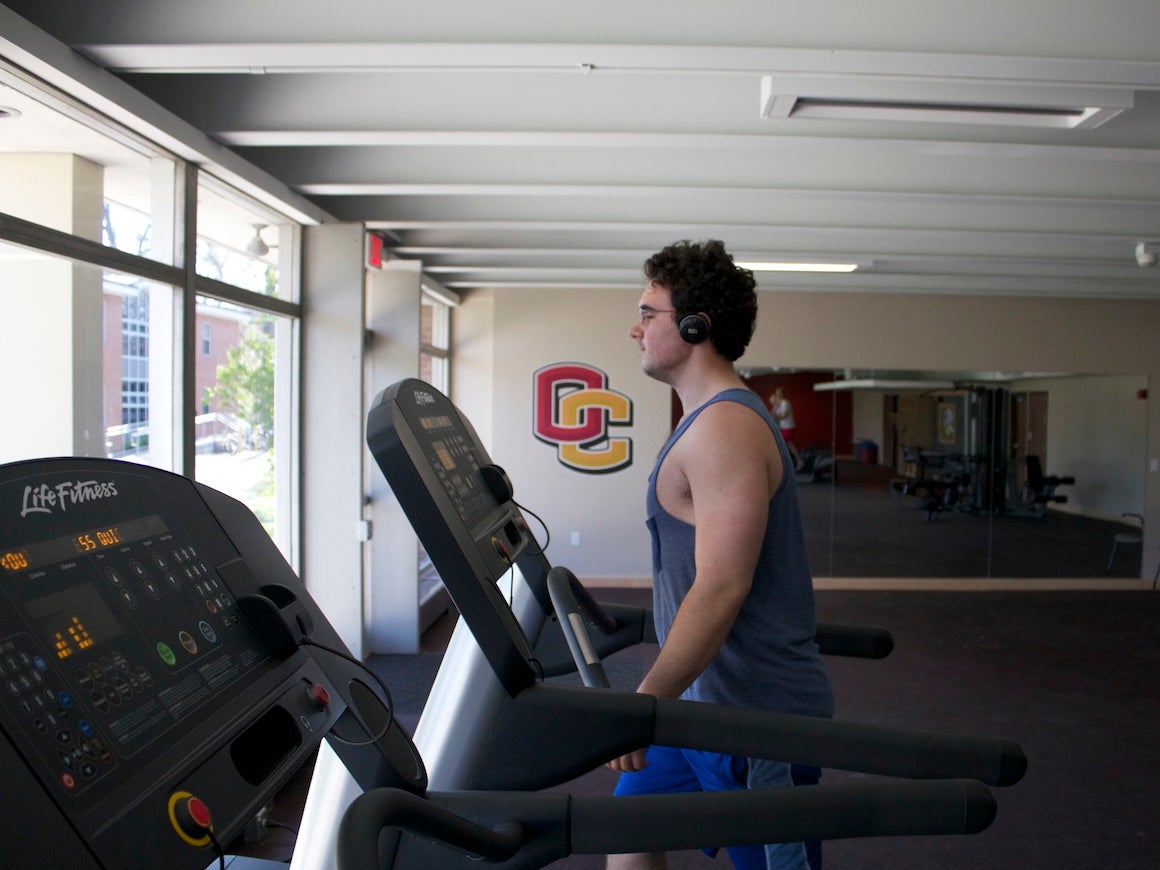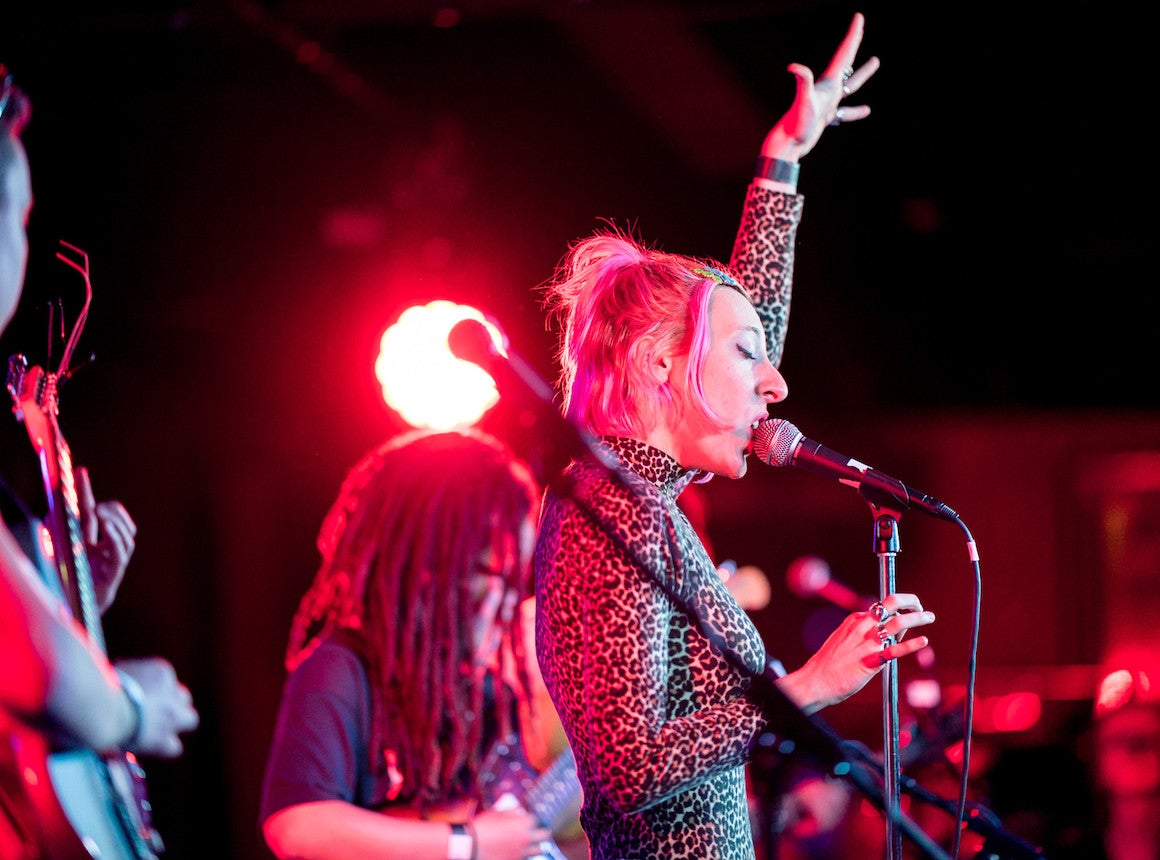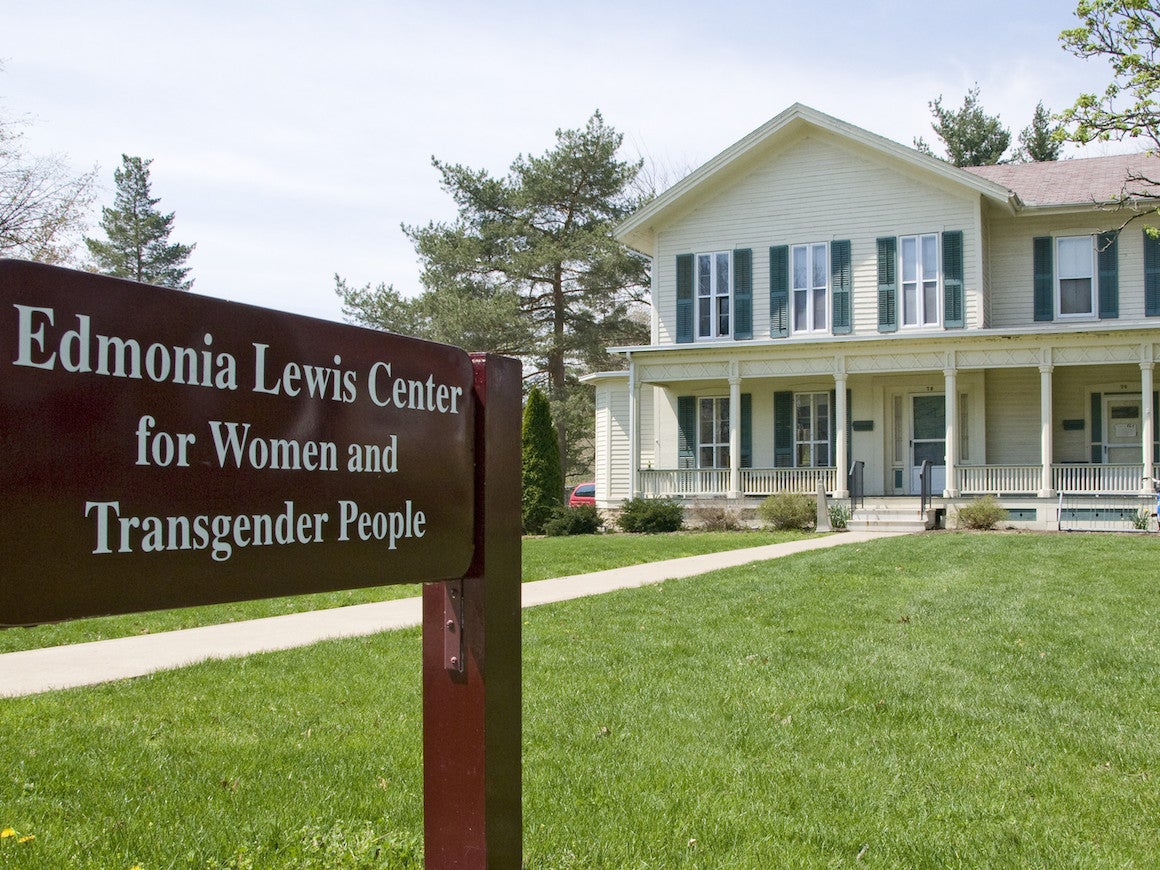Locations & Facilities
David Love Lounge
Located on the second floor overlooking the Science Center Commons, the David Love Lounge is a prime spot for quiet studying.
DeCafé and Market
The DeCafé and Market located in Wilder Hall features bowls, gyros, and flatbreads as well as a surprising variety of convenience and health food items.
Dewy Ward ’34 Alumni Center
The Dewy Ward ’34 Alumni Center is the home of the Oberlin College Alumni Association.
Diane Yu Fitness Center
Diane Yu Fitness Center is on the ground floor of South Hall, the college’s largest residence hall.
Dick Bailey Field
Dick Bailey Field is part of the Austin E. Knowlton Athletics Complex, which replaced the former Savage Football Stadium. The complex features an all-weather, multipurpose field with artificial turf and lights, suitable for nearly every athletics team or club sport on campus.
Dionysus Club (the ’Sco)
This underground nightspot attracts a variety of alternative bands, along with many top-notch musical combos formed by Oberlin students.
Downtown Oberlin
Downtown Oberlin, designated a historic district, is a collection of mostly locally owned businesses along College and Main Streets.
East Hall
East is a traditional residence hall and has the second largest number of singles of all the halls on campus. It is home to approximately 185 residents.
Edmonia Lewis Center for Women and Transgender People
The Edmonia Lewis Center for Women and Transgender People is a collective of students, staff, and administrators doing the work of transforming existing systems of oppression. The house is named for famed artist-sculptor Edmonia Lewis, an Oberlin student from 1859-1862.
Electrophysiology Suite
This lab enables neuroscience students and faculty to work with nerve cells.

